Looking for a free place to park downtown? Wonder who’s buried in
the woods at Shelby Farms? Ever ponder whose faces are carved above the
door at Idlewild Presbyterian Church? And why would anyone put a giant
hand in their front yard?
Read on, and we’ll give away some of the many secrets in our
city.
Unpaid Parking Tickets
Here’s a secret City Court Clerk Thomas Long wishes we’d take to our
grave. Or that he could get changed in the state legislature.
In March, Long told the City Council that Memphis loses $1.5 million
to $2 million annually in unpaid parking tickets, because, under state
law, the statute of limitations for parking tickets and other
non-moving violations is only one year.
Which means, if you don’t pay your parking tickets within a year,
they just sort of go away.
Long wants the council to ask the state legislature to review the
situation, but at least for now, the law stands.
The Faces of Idlewild
 Michael Finger
Michael Finger
When local architect George Awsumb designed Idlewild Presbyterian
Church in the 1920s, he decided to immortalize his two children,
Richard and Georgianna, by having their faces carved above a doorway
there. His own likeness, eyeglasses and all, adorns a top corner of the
soaring bell tower, but you need binoculars to see it. Please do not
try this as you drive down Union.
Chi Omega’s Cabin
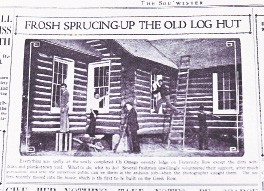
When grocery-store magnate Clarence Saunders built his Pink Palace
mansion in Chickasaw Gardens, he had a log cabin constructed by the
lake behind his house. After he lost his fortune in the 1920s, a
Memphis family bought the cabin, dismantled it, and donated it to
Southwestern (now Rhodes College) so Chi Omega could use it as the
college’s first sorority house. Publicly, the Chi Os were grateful for
the gift; privately (based on cranky letters in the college archives),
they — and the new school’s architect — were mortified that
they were dwelling in a dinky log cabin when the other Greeks were
erecting impressive stone lodges. So Chi Omega eventually covered the
cabin with stone; the original logs are still inside the walls.
No Meter, No Meter Maid
Parking downtown can sometimes be a pain, especially in these
recessionary times. Downtown garages can cost $10 or more an hour,
depending on who’s playing the FedExForum or if there is a baseball
game at AutoZone Park. Parking meters require exact change and are only
available for two hours (if you’re lucky — some are one-hour
meters). And parking illegally can be more expensive if you get
towed.
Enter the almost-mythical meterless space, a parking space that is
painted and lined but does not require any pay to play. At the corner
of Peabody Place and Second, right in front of a popular bar, are two
such spaces.
We’ve heard that there are others out there … you just have to
find them.
The Warren Street Castle
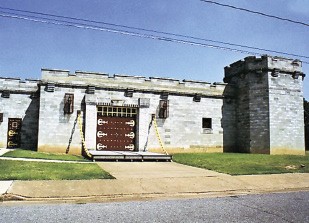
Some people think big. When a property owner in South Memphis (who
didn’t want his name used here) decided to open a little “sundry store”
on what was essentially a residential street in the 1980s, he got a bit
carried away and ended up with a castle, complete with battlements,
turret, and drawbridge. Missing were key details like windows, address
marker, signs, and parking lot — the usual stuff that might
attract customers. The property was sold a few years ago, and the new
owner of the Warren Street Market added all these things, but for years
the place looked like this, just one of the city’s many mystery
buildings.
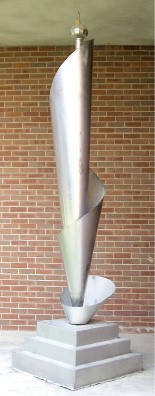
Plaza Theater Spire
Built in 1952, the Plaza Theater on
Poplar was an art deco showpiece, all curves and glass and yellow brick
and stainless steel. Bookstar purchased the property in 1987, and for
some reason the stainless-steel spire disappeared during the building’s
renovation. A few years later, it ended up at the University of
Memphis, where it’s tucked into a nook on the southeast side of the
Fogelman business building. Go see for yourself.
Tsunami’s Bar Fly
When this popular Cooper-Young restaurant was in its infancy,
Tsunami picked up what could only be called a hanger-on.
As workers poured the last layer of epoxy onto the top of the bar, a
fly landed on it. Most of the people there were freaking out, trying to
find something to get it out of the goop, when — as the story
goes — someone apparently said, “Leave it! It’s [chef and
owner] Ben’s [Smith] first bar fly!”
Though over the years that top layer of epoxy has been worn away,
the bar fly — what’s left of him, anyway — can still be
seen.
Morgan Keegan’s Monsters
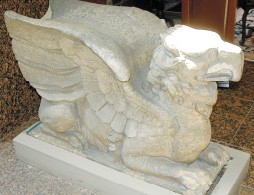
Massive stone griffins guard the lobby and escalator of the Morgan
Keegan Building downtown, but why? Turns out they are ornaments left
over from the old Hotel King Cotton, which once stood on this site
until it was brought down with a blast of dynamite in 1984. The massive
griffins were originally perched on stone ledges jutting out from the
top corners of the old hotel. Getting them down in one piece was quite
a feat, but here they are.
Free Days
Looking for something high-brow but low-cost?
Many people know that the Memphis Zoo has a free day — after 2
p.m. each Tuesday with a valid Tennessee driver’s license — but
the zoo isn’t the only one.
The Memphis Pink Palace Museum and the Lichterman Nature Center are
also free each Tuesday, from 1 p.m. until closing. Free admission to
the Pink Palace doesn’t include IMAX or Planetarium shows but does
include the museum’s regular exhibits.
The Memphis Botanic Garden bucks the trend on Tuesdays and is free
to the public every Wednesday from noon to 6 p.m.
And general admission to Mud Island River Park is free every
day.
Magnolia Tribute Circle
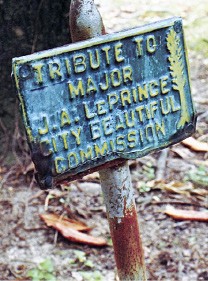
Crawl beneath the big magnolia trees in Chickasaw Gardens —
okay, don’t do it; just take our word for it — and under most of
them you’ll still find old copper markers with names — J.A.
LePrince, Camille Kelley, Abe Goodman, and others. When those trees
were planted in 1931, the head of the City Beautiful Commission came up
with the idea to pay tribute to prominent Memphians with the Magnolia
Tribute Circle, and each year on Mother’s Day (for reasons never made
clear), several markers were unveiled. They finally stopped when they
ran out of trees. There’s even a tree dedicated to George Washington,
who — as far as we know — was not a Memphian, but you’ll
have to find that one for yourself.
The Dog Fountain
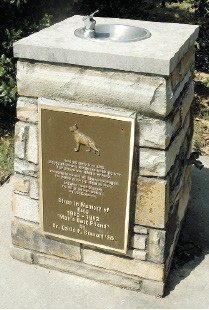
When Dr. David Granoff’s beloved dog Cujo died in 1993, the Rhodes
College alumnus decided to pay tribute to man’s best friend by building
a stone drinking fountain, with a bronze marker at the base. The
fountain is still standing, close to the parking lot on the eastern
edge of the campus, and — unlike most drinking fountains in
Memphis — is still working. Cujo, we think, would be pleased.
Mid-South Fair’s Time Capsule
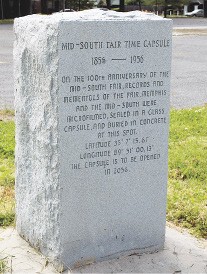
Whoever ends up developing Libertyland and the former Mid-South
Fairgrounds has a challenge. In 1956, to commemorate the fair’s 100th
anniversary, Miss Mid-South Fair and city officials buried a time
capsule close to East Parkway, marking the spot with a block of
granite. Inside a glass jar are all sorts of artifacts designed to
enlighten anyone who opens this thing in 2056, but they’d better be
extra careful, because newspaper accounts report that the jar’s top was
sealed with “a radioactive substance.”
Inspection Inspection
Since the 1930s, vehicles must have a yearly safety inspection
before they can be registered in the city of Memphis. And to hear some
residents tell it, they’ve been in line at the inspection stations
since then.
In all honesty, the lines are almost always long and even longer at
the beginning and end of the month. In somewhat cruel irony, the city
suggests you turn off your radio and air conditioning while you wait
but says you should leave your car idling (exactly the thing that
creates the emissions the city is trying to regulate).
To see what you’re in for, go to http://www.cityofmemphis.org/mvib/webcam.htm.
For the most part, the cameras confirm that there is a line, but at the
very least, they can help you decide whether to bring a magazine or a
copy of War & Peace.
Shelby Farms Graves
Many years ago, the city’s largest park used to be farmland, and at
least two of those farmers are still there — sort of. If you know
where to look (along a trail by Gate 13 in the northeast corner),
you’ll find a weathered gravestone propped against a tree, inscribed
with the names Robert and Mary Mann. Nearby are the bases of half a
dozen tombstones. Who were the Manns, where did they live, what did
they do, and why are they buried in these lonely woods? And —
this is the really intriguing part — who keeps putting flowers on
their graves? We just don’t know.
The Giant Hand
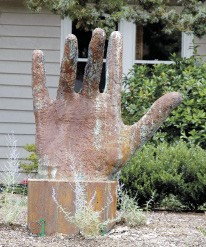
Not everyone puts a giant concrete hand in their front yard —
or certainly not enough people, we say. But Jane Abraham and Keith
Henderson, who operate the Hart Center, a treatment center at 1384
Madison, erected the hand as one element in their elaborate front yard
at 256 Angelus. Abraham explained that the southern half of the yard is
divided into three flower beds, representing the emotional, spiritual,
and physical aspects of our nature, and the northern half depicts the
four directions of the Native American medicine wheel. And the hand?
It’s a Hindu “mudra” — or symbol — that represents teaching
and service. Plus it looks pretty cool, too.
The Airport’s Little Pick-Me-Up
For a few years between 9/11 and now, people picking up passengers
outside Memphis International Airport were forced into a kind of limbo.
Get to the airport before your passenger got out the door and the
almost-always surly security guards would wave you right along, forcing
you to circle the airport like a plane waiting for a runway.
During recent renovations, Memphis International added a feature
that many other airports have found successful: the cell-phone lot. Far
enough away from the airport to not be a security threat, the
cell-phone lot gives people a place to park while they wait for their
passengers to get off the plane and make their way outside. It’s
located near the airport motel.
As Easy As A-B-C
Speaking of the airport … a few years ago, Concourse B got a fancy
renovation because the majority of the airport’s passengers come
through that concourse.
Which means that most of the airport’s passengers also go through
Terminal B security. But, and no offense to Memphis International, the
airport isn’t that big. If you’re running late, it’s a simple thing to
go through the less-crowded checkpoints in the A or C terminals and
then cut back to B.
We’re not saying it’s always faster, but we’ve seen days where the B
security gate has a roller-coaster-like line, whereas C has two
families and a business traveler.
Downtown’s Shamrocks
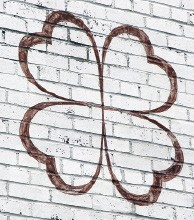
They look like brown shamrocks painted on various buildings close to
the National Civil Rights Museum, but they are actually a grouping of
four hearts — the logo of the now-closed Lucky Heart Cosmetics
firm, which owned several warehouses in this area.
Bowers’ Bulldogs
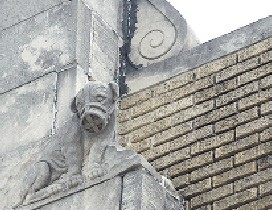
In the early 1900s, Memphian Duke Bowers opened a chain of grocery
stores, with the slogan, “You won’t get bit if you buy at Bowers’.” His
trademark was a muzzled bulldog. Still standing today is the old Bowers
warehouse on Florida Street, just south of Crump, and atop the entrance
are two carved dogs, still wearing their muzzles.
E-Cycle
The EPA estimates that Americans own approximately 24 electronic
devices per household. So what do you do with those things when you’re
done with them?
You can recycle old computers, cell phones, and other hazardous
waste at Shelby County’s Hazardous Waste Center on Haley Road near
Shelby Farms. That includes aerosol cans, automotive fluids such as
antifreeze and motor oil, drain cleaners, pool chemicals, and
pesticides.
Thor
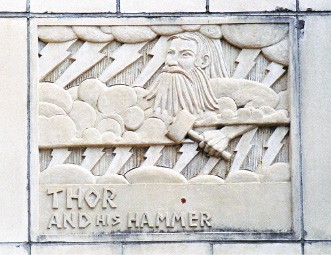
This seems like the answer to a scavenger hunt: Find a sculpture of
the “Thunder God” in Memphis. We’d wager that most people wouldn’t
think to look outside the entrance to Sea Isle Elementary School in
East Memphis, but there it is, a dramatic carving of Thor mounted high
on a wall on the west side of the school. Close to the east entrance is
a similar stone (or concrete) plaque, this once depicting a rather
complicated scene from The Rubaiyat of Omar Khayam. As far as we
know, no other school building in Memphis has similar ornamentation,
and nobody at Sea Isle could explain the origin of these
sculptures.
Birdwood
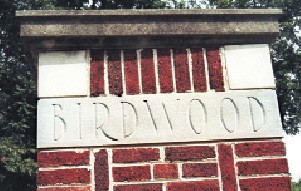
The two brick pillars at Highland and Central once marked the
entrance to a residence built in the 1920s named Birdwood, owned by
William Webster, who turned a little pharmaceutical company here into
the largest manufacturer of aspirin in the world. His wife, Lucy, was
prominent in social circles, serving as president of the Memphis Garden
Club, among other organizations. After their deaths in the 1950s, the
estate was purchased by the Second Church of Christ, Scientist, which
turned the mansion into their sanctuary and built a grand portico on
the north side. The house itself is still there, by the way; the
original entrance faced Highland.
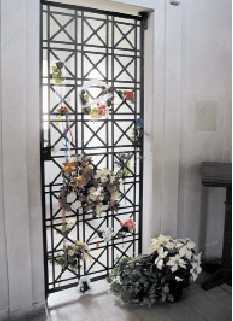
The Elvis Vault
Most people with a basic knowledge of the
life and death of Elvis Presley know that the King of Rock-and-Roll was
originally laid to rest beside his mother, Gladys, in Forest Hill
Cemetery. But he wasn’t actually buried there. Instead, his body was
placed inside a crypt in the cemetery’s mausoleum. When thieves tried
to steal the body one night in 1977, Elvis and Gladys were moved to
Graceland. But the Presley crypt, guarded by a locked iron gate, has
never been occupied at Forest Hill. Fans can still visit it and leave
tributes. (Among cards and flowers and other things, they toss coins
through the gate, for some reason.)
The Frisco Bridge Memorial
We don’t know what to make of 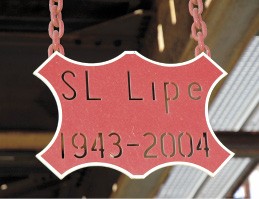
this one. If you know how to get beneath the easternmost end of the old
Frisco Bridge (and that itself is a secret — or at least a
challenge), look up and you’ll see a red metal plaque dangling from
chains welded to the bridge. Neatly cut into the plaque is “SL Lipe
1943-2004.” Who was Lipe and why is he memorialized in this fashion? We
assume he was a railroad worker, but we don’t know.
Strange Sculptures

Patients at the Memphis Dermatology Clinic on Union at Kimbrough
probably pay little attention to the pair of bas-relief sculptures
flanking the front door, which depict people holding models of
factories and doing seemingly nonmedical things. That’s because the
clinic originally housed the Kensinger Insurance Agency, which insured
everything from people to businesses. The sculptures were carved by Ted
Rust, former president of the Memphis College of Art, whose work is
also visible at Rhodes College, the Benjamin Hooks Library, and other
places around town.
Registered Male
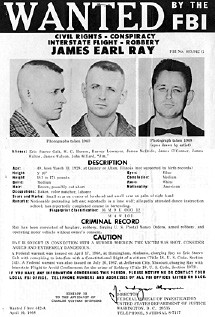
One imagines the Shelby County Register of Deeds website is used
primarily for property questions: It has a database of property
records, as well as aerial views of area land parcels.
But many people don’t know that it also includes online versions of
selected county archives, including photos of the Martin Luther King
Jr. assassination investigation and, almost more perplexing, the
Memphis milk supply from 1920 to 1958.
But forget about the milk for a minute. Want to see James Earl Ray’s
mugshots from an earlier arrest? What about a shot of him holding a
diploma from the Lau Los Angeles Dance School? Want to see his canceled
Canadian passport (under the name Ramon George Sneyd)? Or his Canadian
birth certificate (also for Sneyd)? All there.
The site also includes audio files from the police department’s
dispatcher the night of King’s murder, Ray’s arraignment, and the court
proceedings.
And if you’re interested in those milk records, they are there,
too.
Memorial to a Boy
There’s actually a swimming pool in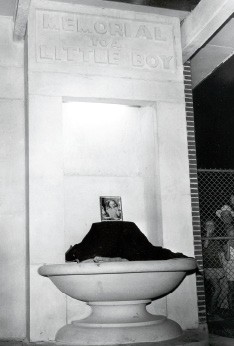
Memphis dedicated to a drowning victim. When 9-year-old Ronnie Jones
was swept away by swift currents while playing in the Wolf River on
July 23, 1954, citizens expressed outrage that there was no free (and
safe) place for kids to swim in what was then East Memphis. Funds were
raised to build the “Ronnie Jones Pool” on Macon, and companies and
individuals donated their services. After the pool was built, however,
the park commission decided to leave the poor kid’s name off of it and
didn’t even mention him on the concrete “Memorial to a Little Boy” by
the entrance. Only years later was a smaller bronze plaque attached,
telling the story of Ronnie.
The Dogs of Court
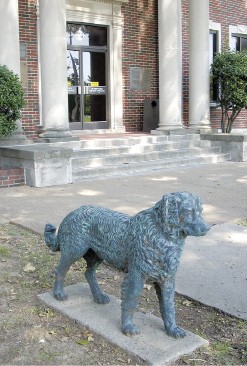
Two cast-iron mastiffs guard the entrance to Juvenile Court on
Adams. They’ve been standing there, in essentially the same spot, for
more than 100 years. The story goes that a fellow named William Decatur
Bethell purchased the dogs in Europe in the 1870s for $5,000
— an enormous sum in those days. He kept them in his garden
here and then gave them to his cousin, Mrs. H.M. Neely, when he moved
away to Colorado. Neely set them outside the front door to the mansion
that once stood on this site, and they watched over her property until
1965, when the big house was demolished to make way for the Juvenile
Court building.
Facing Main Street
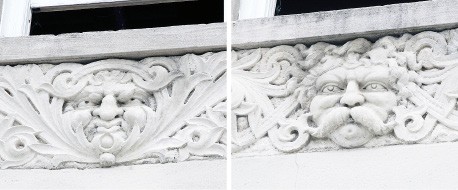
An otherwise unadorned building at 326-328 North Main has two almost
grotesque-looking faces carved in stone above the double entrance. They
depict the faces of the building’s original owners, John T. and Anthony
Walsh, described by historian Paul Coppock as “the pre-eminent
businessmen of North Memphis.” Among other ventures, John was president
of the North Memphis Savings Bank and Anthony ran the North Memphis
Baking — not Banking — Company. In the late 1800s, this
particular building housed yet another venture, the Walsh Brothers
Grocery. John, by the way, is the fellow with the moustache.